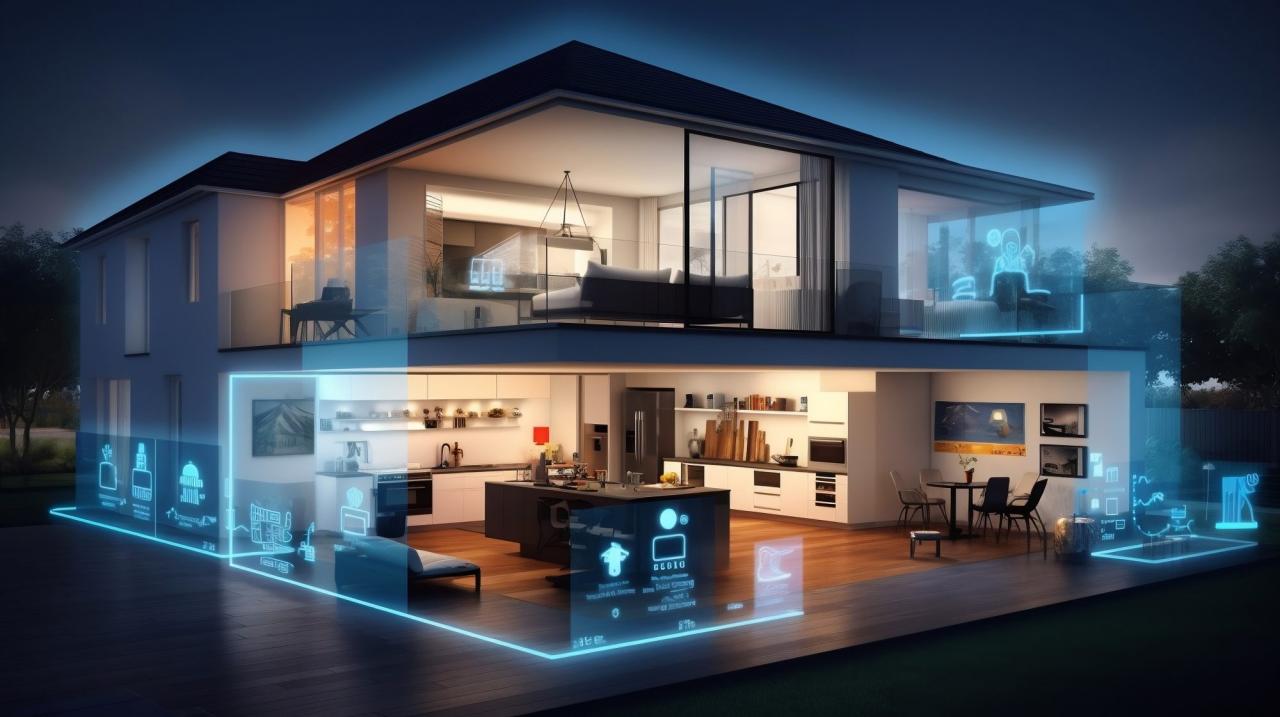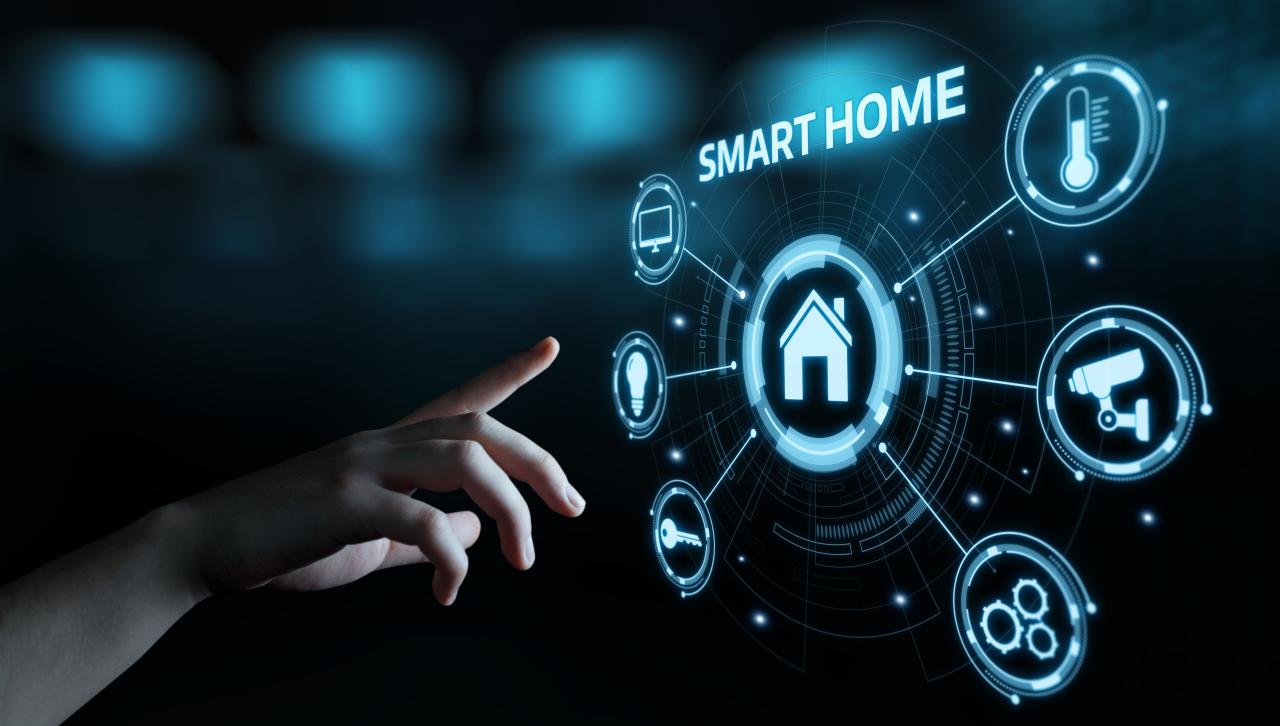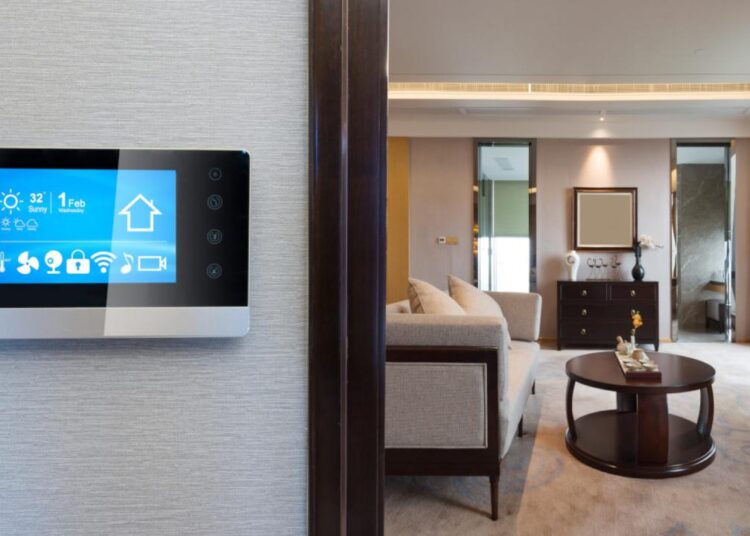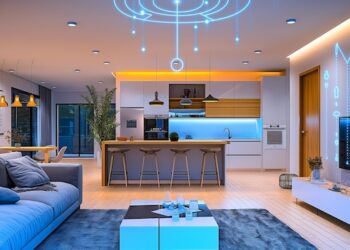The very essence of our homes is undergoing a revolutionary transformation. No longer just static structures, residences are evolving into dynamic, intelligent ecosystems, seamlessly integrated with technology to enhance comfort, security, efficiency, and entertainment. This profound shift, driven by advancements in connectivity, artificial intelligence, and user-centric design, is reshaping how we interact with our living spaces, moving us towards a future where homes intuitively cater to our needs. The rise of the smart home isn’t merely a trend; it’s a fundamental redefinition of modern living, promising a more convenient, sustainable, and enjoyable domestic experience.
Why Smart Homes Matter

The burgeoning interest in smart home technology stems from a confluence of factors, each contributing to the growing demand for connected living. Understanding these drivers is key to grasping the profound impact of this revolution.
A. Technological Advancements: The proliferation of high-speed internet, Wi-Fi 6, 5G, and Bluetooth Low Energy has created a robust foundation for device connectivity. Miniaturized sensors, powerful microprocessors, and sophisticated algorithms now enable devices to “think” and communicate, paving the way for truly intelligent automation. The refinement of artificial intelligence (AI) and machine learning (ML) allows smart home systems to learn user preferences, anticipate needs, and adapt over time, making them increasingly intuitive.
B. Convenience and Comfort: Modern life is fast-paced, and people seek ways to simplify daily routines. Smart homes offer unparalleled convenience, automating tasks that once required manual intervention – from adjusting thermostats to brewing coffee. The ability to control various aspects of the home remotely, or through voice commands, frees up valuable time and reduces mental load. The pursuit of ultimate comfort, where environments automatically adjust to individual preferences for lighting, temperature, and entertainment, is a powerful motivator.
C. Enhanced Security and Safety: Personal safety and the protection of property are paramount concerns for homeowners. Smart security systems, with their advanced features like remote monitoring, motion detection, smart locks, and integrated cameras, offer peace of mind. Beyond security, smart homes enhance safety through intelligent smoke detectors, carbon monoxide sensors, and water leak detectors that can alert homeowners to potential hazards before they escalate.
D. Energy Efficiency and Sustainability: With growing environmental awareness and rising energy costs, homeowners are increasingly seeking ways to reduce their ecological footprint and save money. Smart home devices, particularly smart thermostats, lighting, and appliance management systems, can significantly optimize energy consumption. By learning usage patterns and responding to external conditions, these systems prevent waste and contribute to a more sustainable lifestyle.
E. Accessibility and Inclusivity: Smart home technology has immense potential to improve accessibility for individuals with disabilities or limited mobility. Voice control, automated routines, and remote access enable greater independence and ease of living, allowing more people to comfortably age in place or navigate their homes with less assistance.
F. Entertainment and Lifestyle Enhancement: Beyond practicalities, smart homes elevate the entertainment experience. Integrated audio-visual systems, smart TVs, and personalized media streaming transform living spaces into immersive entertainment hubs. Furthermore, features like smart mirrors, smart beds, and smart kitchen appliances integrate seamlessly into a holistic lifestyle, supporting health, wellness, and culinary pursuits.
The Core Components of a Connected Home
A smart home is a symphony of interconnected devices and systems, working in harmony to create an intelligent living environment. Understanding these core components is essential to appreciating the breadth of functionality offered.
A. Central Hubs and Controllers
At the heart of every smart home ecosystem lies a central hub or controller, acting as the brain that coordinates all connected devices.
A. Dedicated Smart Hubs: Devices like Amazon Echo (Alexa), Google Nest Hub, Apple HomePod, or Samsung SmartThings hub serve as the primary interface and processing unit. They connect to various smart devices, often across different communication protocols (Wi-Fi, Zigbee, Z-Wave, Thread), allowing them to “talk” to each other and execute commands.
B. Smartphone Apps: Most smart devices come with dedicated apps, which often serve as the initial setup and primary control interface. These apps allow remote monitoring and control from anywhere with an internet connection.
C. Voice Assistants: Integrated into hubs, smartphones, and dedicated speakers, voice assistants (Alexa, Google Assistant, Siri) offer hands-free control, making interactions with the smart home intuitive and natural.
B. Lighting and Climate Control
These are often the entry points for many homeowners into smart living, offering immediate benefits in comfort and energy savings.
A. Smart Lighting:
A. Smart Bulbs: These are Wi-Fi or Bluetooth enabled, allowing color change, dimming, and scheduling via an app or voice. They can also sync with music or movies.
B. Smart Switches/Dimmers: These control existing “dumb” bulbs, turning them into smart lights, often preferred for aesthetics and maintaining traditional switch functionality.
C. Motion Sensors: Integrate with lighting systems to turn lights on/off based on presence, saving energy.
B. Smart Thermostats: Devices like Nest, Ecobee, or Honeywell Home learn your temperature preferences, adjust settings based on occupancy, weather, and schedule, and can be controlled remotely. They often provide detailed energy usage reports, helping homeowners identify savings opportunities.
C. Security and Surveillance Systems
Providing unparalleled peace of mind through vigilant monitoring and swift alerts.
A. Smart Locks: Keyless entry via keypad, fingerprint, smartphone app, or even voice. They can grant temporary access codes to visitors and log entry/exit times.
B. Security Cameras: Indoor and outdoor cameras with features like motion detection, night vision, two-way audio, and cloud storage for video footage. Some integrate with facial recognition or pet detection.
C. Doorbell Cameras: Allow homeowners to see, hear, and speak to visitors from anywhere, even when not home. They often include motion alerts and recording capabilities.
D. Window/Door Sensors: Detect opening and closing, triggering alarms or alerts.
E. Alarm Systems: Integrated smart alarms that can be armed/disarmed remotely and connected to professional monitoring services.
D. Smart Appliances
From the kitchen to the laundry room, appliances are becoming increasingly intelligent.
A. Smart Refrigerators: Features include internal cameras to see contents remotely, touchscreens for notes/calendars, and even ingredient tracking or recipe suggestions.
B. Smart Ovens/Cooktops: Remote preheating, recipe integration, and even self-cleaning notifications.
C. Smart Washing Machines/Dryers: Remote cycle starting, notifications when laundry is done, and optimized cycles for energy efficiency.
D. Robot Vacuums: Automated cleaning, often with mapping capabilities to learn the home’s layout and avoid obstacles.
E. Entertainment and Audio-Visual
Transforming living spaces into immersive media hubs.
A. Smart TVs: Integrated with streaming services, voice assistants, and capable of connecting to other smart home devices.
B. Smart Speakers: Beyond voice assistance, they offer high-quality audio for music streaming and can be grouped for multi-room audio.
C. Streaming Devices: Devices like Apple TV, Roku, or Chromecast enable smart capabilities for traditional TVs.
D. Home Theater Integration: Automated control of projectors, screens, sound systems, and lighting for cinematic experiences.
Advanced Functionalities and Emerging Trends

The smart home ecosystem is constantly evolving, with new capabilities and trends pushing the boundaries of what’s possible.
A. Personalized Automation and Routines
Beyond simple on/off commands, smart homes excel at complex, user-defined automation.
A. Geofencing: Your home can react to your location. Lights can turn on as you approach, or the thermostat can adjust when you leave for work.
B. Schedules: Setting lights to dim at bedtime, coffee to brew at wake-up, or sprinklers to activate at specific times.
C. “Scenes” and Routines: Creating predefined settings for multiple devices with a single command (e.g., “Good Night” scene might lock doors, turn off lights, arm the alarm, and lower the thermostat). Modern systems allow for intricate “if-then” logic, where one event triggers a cascade of actions (e.g., “If the front door opens after 10 PM and I’m not home, turn on the living room lights and send me an alert”).
D. Adaptive Learning: AI and machine learning allow systems to observe user habits over time and proactively suggest or implement adjustments to lighting, temperature, or music, optimizing comfort without constant manual input.
B. Energy Management and Net-Zero Living
The drive for sustainability is elevating the role of smart technology in homes.
A. Granular Energy Monitoring: Devices that track energy consumption of individual appliances, identifying energy hogs and areas for improvement.
B. Smart Grid Integration: Future smart homes will interact more directly with the power grid, optimizing energy usage based on peak demand pricing, drawing power during off-peak hours, or even feeding excess solar energy back to the grid.
C. Optimized HVAC: Smart thermostats, combined with smart vents and zone controls, ensure heating and cooling are directed only where and when needed, minimizing waste.
D. Water Leak Detection and Shutoff: Sensors can detect leaks early, preventing extensive damage and conserving water by automatically shutting off the main water supply.
E. Solar and Battery Integration: Smart systems can manage energy flow from solar panels, optimize battery storage, and decide whether to use stored power or draw from the grid, maximizing self-sufficiency and reducing reliance on fossil fuels.
C. Health and Wellness Integration
Smart homes are becoming proactive partners in promoting well-being.
A. Air Quality Monitoring: Sensors detect pollutants (VOCs, particulate matter), CO2 levels, and humidity, triggering air purifiers or ventilation systems when needed.
B. Circadian Lighting: Lights that mimic natural sunlight patterns, changing color temperature and brightness throughout the day to support healthy sleep cycles and alertness.
C. Sleep Tracking Beds: Smart beds that monitor sleep patterns, heart rate, and breathing, offering insights and even adjusting firmness for optimal comfort.
D. Smart Mirrors: Providing personalized health insights, workout routines, or virtual skin analyses.
E. Fall Detection and Emergency Alert Systems: Especially crucial for elderly residents, these systems can detect falls and automatically alert caregivers or emergency services.
D. Enhanced Connectivity and Standards
The industry is moving towards greater interoperability.
A. Matter and Thread: Newer connectivity standards like Matter aim to solve fragmentation issues, allowing devices from different manufacturers to communicate seamlessly. Thread provides a self-healing mesh network for low-power devices, enhancing reliability.
B. Edge Computing: More processing power directly on devices, reducing reliance on cloud servers, improving response times, and enhancing data privacy.
C. Home Network Security: As more devices connect, robust network security, including strong encryption and regular software updates, becomes paramount to protect against cyber threats.
E. Robotics and Automation Beyond Fixed Devices
The introduction of mobile robots further extends home intelligence.
A. Personal Assistant Robots: Beyond static smart speakers, mobile robots could navigate the home, assist with tasks, or even provide companionship.
B. Automated Cleaning: Advanced robot vacuums and mops, some with self-emptying and self-washing capabilities.
C. Smart Garden Care: Automated irrigation systems, robotic lawnmowers, and sensors that monitor soil moisture and nutrient levels.
Designing Your Smart Home Ecosystem
Embarking on the smart home journey requires thoughtful planning to ensure a seamless and future-proof setup.
A. Define Your Needs: What problems are you trying to solve? Is it security, energy savings, convenience, or accessibility? Starting with specific needs helps in selecting relevant devices.
B. Choose Your Ecosystem: Deciding on a primary ecosystem (e.g., Apple HomeKit, Google Home, Amazon Alexa, Samsung SmartThings) is crucial. While interoperability is improving, sticking to a core platform often simplifies setup and daily use.
C. Connectivity Protocol: Understand the differences between Wi-Fi, Bluetooth, Zigbee, Z-Wave, and Thread. Wi-Fi devices are easy but can congest networks. Zigbee and Z-Wave are mesh networks ideal for many devices and lower power consumption. Thread is a newer, IP-based mesh network gaining traction.
D. Security and Privacy: Research device manufacturers’ privacy policies and security features. Opt for devices with end-to-end encryption, multi-factor authentication, and a strong reputation for data protection. Be mindful of data sharing settings.
E. Scalability: Plan for future expansion. Choose a system that can easily integrate new devices as your needs evolve and new technologies emerge.
F. Budget: Smart home technology can range from affordable entry-level devices to premium, whole-home automation systems. Set a realistic budget and prioritize purchases based on your most pressing needs.
G. Installation and Setup: Some devices are plug-and-play, while others may require professional installation. Consider your comfort level with DIY versus hiring an expert.
H. Voice vs. App Control: Decide which control method you prefer most. While voice control is convenient, a well-designed app provides granular control and scheduling capabilities.
I. Compatibility: Always check device compatibility with your chosen hub and other existing smart home products before purchasing. The Matter standard is working to simplify this, but it’s not yet universal.
Challenges and Considerations in the Smart Home Revolution
Despite its myriad benefits, the widespread adoption of smart home technology faces several hurdles that need to be addressed.
A. Interoperability and Fragmentation: One of the biggest challenges remains the lack of seamless communication between devices from different brands. While standards like Matter are addressing this, many legacy devices still operate on proprietary systems, leading to complexity for consumers.
B. Data Privacy and Security Risks: Smart devices collect vast amounts of personal data, from daily routines to voice commands and video footage. This raises significant privacy concerns. Furthermore, poorly secured devices can become entry points for cyberattacks, making robust security protocols and regular software updates critical.
C. Complexity and User Experience: While designed for convenience, setting up and troubleshooting complex smart home ecosystems can be daunting for non-tech-savvy users. A clunky user interface or unreliable connectivity can quickly lead to frustration.
D. Cost of Entry: While individual devices are becoming more affordable, building a comprehensive smart home ecosystem can still be a significant investment, especially for high-end systems and appliances.
E. Reliance on Internet Connectivity: Many smart home features are dependent on a stable internet connection. Outages can render systems inoperable, reducing the “smart” aspect to “dumb” devices.
F. Planned Obsolescence and Support: The rapid pace of technological change means that smart devices can become obsolete quickly. Long-term software support and availability of replacement parts are critical for sustainability.
G. Power Consumption: While some smart devices aim for energy efficiency, a multitude of always-on, connected devices can collectively contribute to increased power consumption if not managed wisely.
The Future of Living
The trajectory of smart home technology points towards a future where homes are not just intelligent but deeply intuitive, proactive, and seamlessly integrated into a larger smart city infrastructure.
A. Proactive and Predictive Homes: Instead of simply reacting to commands, future homes will anticipate needs. AI will learn your mood, health, and schedule, automatically adjusting lighting, music, and climate to optimize your well-being. Imagine a home that gently wakes you up with increasing light and calming sounds, based on your sleep cycle data.
B. Hyper-Personalization at Scale: Every aspect of the home will be tailored to the individual. Walls could change color based on mood, furniture could reconfigure itself, and personalized content streams could follow you from room to room.
C. Integration with Healthcare: Smart homes will play a crucial role in preventative healthcare and elder care. Sensors could monitor vital signs, detect subtle changes in behavior that indicate health issues, and facilitate remote consultations with doctors, allowing for independent living for longer.
D. Sustainable Microgrids and Energy Autonomy: Homes will become even more energy independent, leveraging solar, wind, and advanced battery storage, managing energy intelligently, and potentially even trading excess energy back to the grid.
E. Robotic Integration: Beyond robotic vacuums, expect more specialized domestic robots assisting with chores, security patrols, and even offering companionship.
F. Seamless Blurring of Physical and Digital: Augmented reality (AR) and virtual reality (VR) will integrate into the home, allowing for virtual decor changes, interactive learning experiences, or remote social interactions that feel incredibly real.
G. Community and Smart City Interconnectivity: Homes will be part of a larger smart city network, optimizing traffic flow, waste management, public safety, and energy distribution, creating truly intelligent urban environments.
Conclusion
The transformation of our homes into intelligent sanctuaries is a journey that promises unprecedented levels of comfort, efficiency, and security. As technology continues its relentless march forward, the boundaries of what a home can be will continue to expand, offering a truly redefined living experience for generations to come. The smart home is not just about gadgets; it’s about creating living spaces that understand us, adapt to us, and enrich our lives in ways we are only just beginning to imagine.









